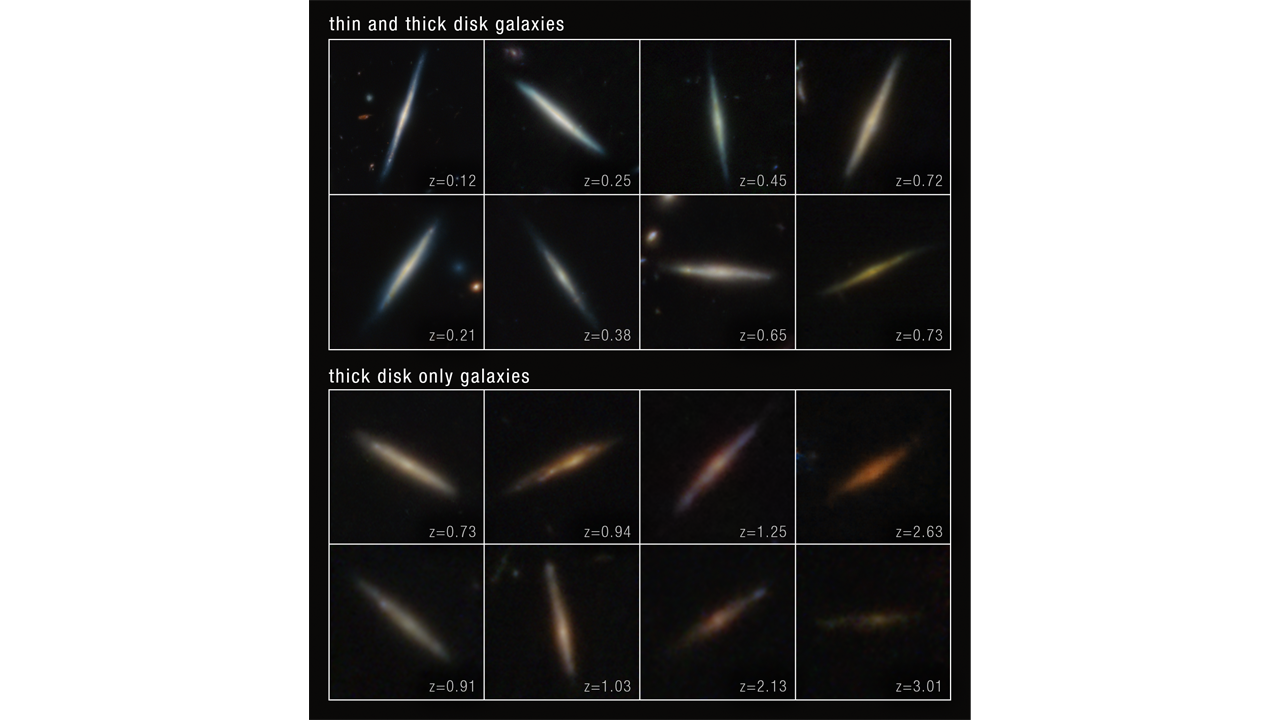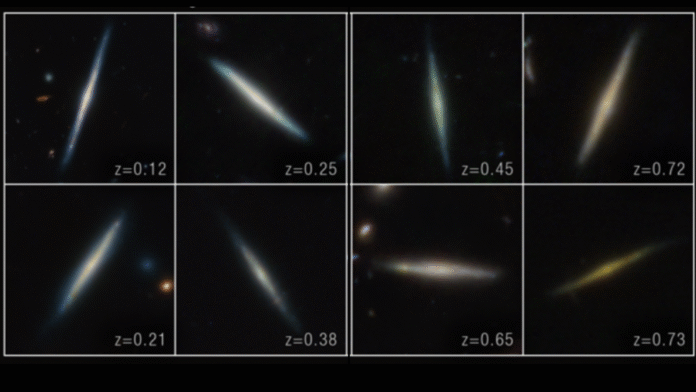Astronomers taken on the role of cosmic archeologists, using the James Webb Space Telescope (JWST) to excavate over 100 disk galaxies from up to 11 billion years ago. Just like artifacts excavated here on Earth tell the story of the human race, these galaxies could tell the story of our galaxy, the Milky Way.
The aim of this investigation was to discover why galaxies like the Milky Way are constructed of thick disks of stars with embedded thin stellar disks. Each of these disks feature its own distinct stellar population with its own movement.
The team behind this research wanted to know how and why this “dual-disk” structure forms, turning to observations of 111 disk galaxies that are oriented “edge-on” from our perspective here on Earth. This represented the first time astronomers had studied thick- and thin-disk structures of galaxies that existed during the infant stages of the cosmos, as early as 2.8 billion years after the Big Bang.
“This unique measurement of the thickness of the disks at high redshift, or at times in the early universe, is a benchmark for theoretical study that was only possible with the JWST,” team leader Takafumi Tsukui of the Australian National University said in a statement. “Usually, the older, thick disk stars are faint, and the young, thin disk stars outshine the entire galaxy.
“But with the JWST’s resolution and unique ability to see through dust and highlight faint old stars, we can identify the two-disk structure of galaxies and measure their thickness separately.”
Telling the history of the Milky Way
The first step for the team was to separate the 111 galaxies in the sample into two categories: dual-disked and single-disked.
What this seemed to reveal was that galaxies grow their thick stellar disk first, with the thin disk forming at a later point.
The team thinks the timing of these disk formation processes hinges on the mass of the galaxy in question. High-mass, single-disk galaxies transformed into dual-disk structures by forming an embedded thin disk around 8 billion years ago in our approximately 14-billion-year-old universe. Lower-mass galaxies only seemed to undergo this transformation when they were around 4 billion years old.
“This is the first time it has been possible to resolve thin stellar disks at higher redshift. What’s really novel is uncovering when thin stellar disks start to emerge,” Emily Wisnioski, study team member and a researcher at the Australian National University, said in the statement. “To see thin stellar disks already in place 8 billion years ago, or even earlier, was surprising.”

The team then set about determining what caused the transitions for these different types of galaxies. To do this, the researchers went beyond their sample of 111 galaxies to investigate how gas flowed around these subjects.
They used gas-motion data from the Atacama Large Millimeter/submillimeter Array (ALMA) — a collection of 66 antennas in northern Chile that work together as a single telescope — and other ground-based observatories.
This showed that turbulent gas in the early universe triggers bouts of intense star formation in galaxies, birthing these galaxies’ thick stellar disks. As these thick-disk stars form, the gas is stabilized, becoming less turbulent and thinning out. That leads to the formation of the embedded thin stellar disk.
This process, the team says, takes a different amount of time in high-mass galaxies and low-mass galaxies because the former convert gas to stars more efficiently than the latter. That means gas is depleted more rapidly in high-mass galaxies, getting them to the point at which their thin stellar disks can form more quickly.

This links to our own galaxy as well. The timing of these transitions matched the period at which the Milky Way is theorized to have grown its own thin disk of stars.
All in all, the team’s research demonstrates the ability of the JWST to peer back in time and find galaxies that match the evolution of our own galaxy, allowing these galaxies to act as proxies that tell the story of the Milky Way.
The next step for this research will involve the team adding more data to see if the relationships they observed still stand.
“There is still much more we would like to explore,” Tsukui said. “We want to add the type of information people usually get for nearby galaxies, like stellar motion, age and metallicity [the abundance of elements heavier than hydrogen and helium].
“By doing so, we can bridge the insights from galaxies near and far, and refine our understanding of disk formation.”
The team’s results appear in the July edition of the journal Monthly Notices of the Royal Astronomical Society.






